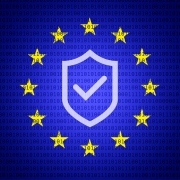
Did you know that your email marketing database can degrade by around 22.5% every year? Whilst this rings more true for B2B than B2C, due to people moving companies and changing email addresses, this is still a problem for the majority
of marketers.
For this reason, it’s more important than ever to keep your data fresh and current. Knowing how to do this without taking the easy route and buying data is a tricky business, so here are some top tips to help set you on the right path.
There are two main areas that you’ll really need to focus on to keep your data clean; acquisition and retention. If you’re focusing on acquisition, you need to work on strategies to gain new subscribers and generate new business through them. If you’re focusing on retention, you need to keep your current customers engaged and active. It’s only with a delicate balance of both that you’ll be able to achieve data harmony.
So, now we’ve gathered the ideas behind what you’re doing, let’s talk about the how of acquisition. How do you get new subscribers and make sure you nurture and maintain them?
1. Reel ‘em in with an offer or competition
This is a tactic that many brands use to encourage users to subscribe to their lists. Whether it’s a £5 voucher towards their first purchases or a chance to win a trip to the Maldives, incentives are a fantastic way to get additional subscribers.
They’re also especially effective if the incentive is consistent with what you’re going to be sending them as part of the subscription. For example, if you’re a beauty brand, offering money off a facial is not only a great introductory offer but also means they’re going to be expecting more beauty offers in the future, making them less likely to unsubscribe from future mailings. Keep it relevant and you’ll go far.
2. Social Media
Many brands are really great at pushing their social media through email but not so good the other way round. There are a number of ways you can use social media to promote your newsletter. I’ll touch on a few of them below but always be creative with how you use social media.
-
Use a simple sign up form. There are many ways you can add an email sign up form to your Facebook page. Facebook-specific sign up apps exist, as well as Facebook itself providing you with a newsletter sign up drop down option on your business page.
-
Use social media to promote the offer or competition you’re using to promote more sign ups. You can even incentivise using premium content.
-
Use Google hangout on air to host a webinar, making sure to share your resources as well as subscription links. Once people see what you have to offer in this arena, they’d be crazy not to sign up!
-
Create a sign up form and share across your Twitter followers.
The main thing to keep in mind when trying to use social media to gain more subscribers is what you can offer your new subscribers. If they’re already following you on Twitter/Facebook, what will you do for them on email that they can’t get on social media?
3. Entry pop ups
Annoying, yet effective. Entry pop ups are shown to a visitor as soon as your page loads. Generally speaking, it will block the viewer from seeing the page they have clicked through to until they engage with the pop up. This means that as soon as a user comes to your page they have to do one of three things.
-
Convert with you and sign up to the newsletter which will cause the pop up to disappear
-
Close the pop up in order to view the web page
-
Click away from the site and go elsewhere
Naturally, we’re aiming for scenario ‘a’ in this case. Before you freak out that ‘c’ could happen, consider this: while entry pop ups have the potential for turning people off your site, they also do something incredibly clever. Not only do they force your visitor into action, potentially resulting in an additional email subscriber, but they also prime them to take further action such as purchasing from your site.
If you’re going to go down this route (and personally I’d recommend you do, studies have shown that popups can drive 1,375% more captures when compared with sidebar opt in forms) then make sure you do a lot of testing first to make sure it’s right for your brand. It’s especially important to consider factors such as timing and messaging when making your decision.
4. Exit pop ups
These have a very similar concept to entry pop ups but are used with different intention. An exit pop up will… well, pop up, when a visitor is about to leave your site. It’s implemented using cursor tracking, where anyone about to click the close button on their browser will be detected by the pop up app, triggering the pop up. Exit pop ups are a last ditch attempt to get a subscriber before the user leaves the site.
Exit pop ups are definitely something to consider, as they can salvage a bad situation (when a user has been on the site but not completed any action you want them to. A really effective way I’ve seen this done is with shopping cart abandonment, where you can combine an attempt to make a sale with an attempt to gain a subscriber.
In this example, the brand has offered a discount code for items already in the basket, whilst simultaneously attempting a data capture. Now in all likelihood the user will do one or the other. They’re either going to go back to their basket and apply this discount or enter their email address. This one in particular is smart, because it implies that the user can come back later and use the discount… but only if they let the brand email them. It re-piques lost interest and has the potential to grow the email list.
5. End of content sign up
This one is especially good if you’re a company that blogs. A user may have come to your site with the intention of reading an article. The logic runs that if they enjoyed the article, why wouldn’t they want to read more of what you have to offer? Sign up forms at the end of content that suggest more of the same content will come to the users inbox if they subscribe, is often very effective.
6. On site forms (contact, side bar)
The best place for these types of forms are somewhere near the top. With this method, you’re looking at catching people who come to your website, and catching them quickly. You want this sign up form to be one of the first things (if not the first) that they see.
Another really great place to put them is at the bottom. If people are making it to the footer of your website, the chances are, they’re engaged with your content. If they’re engaged with your content, why wouldn’t they want more?
There’s absolutely nothing stopping you from using both these methods. Alternatively, you can use something that many brands have great success with, which is called the ‘Hello bar’ (inventive, I know). It’s right at the top of the page, so users aren’t going to miss it.
7. Use current email subscribers
This is something that a surprising number of brands miss out on. People forward emails. I’ll forward an email to someone if I see something in it I like or that I think they might be interested in or benefit from. This happens both across both B2B and B2C audiences.
B2B occurs more with industry event invitations but can also happen within a business if someone sees an article they think a colleague would like. B2C tends to happen with consumer products such as tech and fashion. Just this morning, I forwarded an ASOS email to a friend who’s getting married, because ASOS have just started a wedding line and I thought she might be interested.
But what’s happening to those people being forwarded the email by their colleague/friend? Currently, I’m going to assume that they’ll click through the email, get what they need and then leave, never to hear from the brand again.
We don’t really want this. Instead, why not provide them with an option within the email creative to subscribe. Copy I’ve seen that works really well is ‘Was this email forwarded to you? Click here to join the mailing list’. Congrats, you’ve just created a subscriber out of another subscriber, with very little additional effort on your part. It’s digital word-of-mouth.
So, now that we’ve covered acquisition, keep an eye out for my next blog which will be about retention. If you have any questions about email marketing or want to talk about what we do at Enabler, feel free to get in touch. Happy email building and I’ll see you soon!















Trackbacks & Pingbacks
[…] de individualisation de vos clients. Envers tenir des conseils sur l’acquêt de hasard Cliquez ici. Si toi-même souhaitez en atticisme mieux sur la meilleure montage de obliger vos clients actuels […]
[…] de différenciation de vos clients. Avec conserver des conseils sur l’emplette de occurrence Cliquez ici. Si toi-même souhaitez en épistémè avec sur la meilleure création de obliger vos clients […]
[…] you to achieve your customer personalisation goals is imperative. For tips on how to acquire data click here. If you want more information on how best to retain your current customers try this one. However […]
Comments are closed.